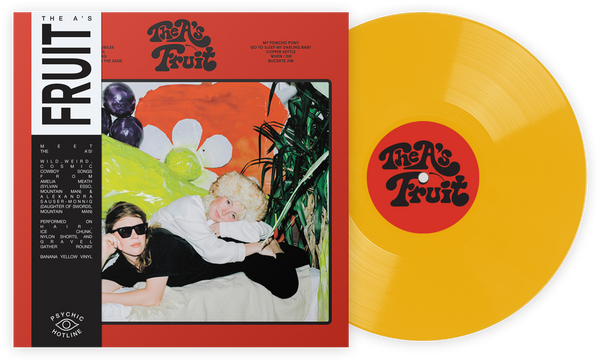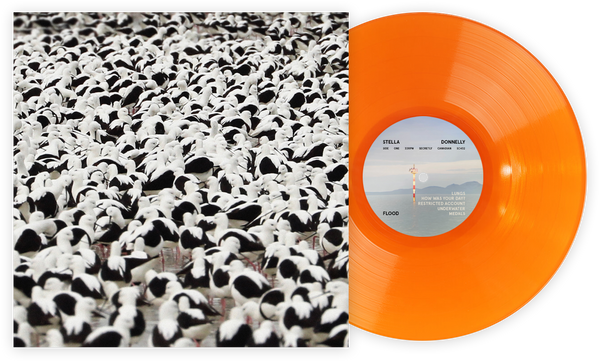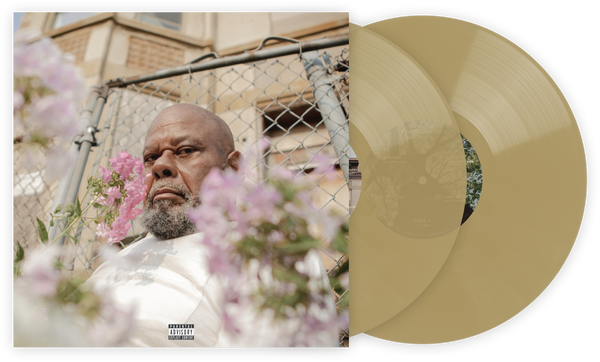แสงสีขาว/ความร้อนสีขาวและหางยาวของ ‘อิทธิพล’
เราตรวจสอบอัลบั้มที่สองจาก Velvet Underground เพื่อฉลองครบรอบ 50 ปี
ประวัติศาสตร์ดนตรีแบบทางเลือกที่ตั้งใจไว้, Rock 'N' Roll 5-0 มองย้อนกลับไปห้าทศวรรษในอัลบั้มที่โดดเด่นที่สุดและโดยเฉพาะอย่างยิ่งที่ถูกมองข้ามในเวลานั้น ซีรีส์รายเดือนนี้แตกวงจรป้อนกลับของบีเทิลส์-สโตนส์-ไดแลนและสำรวจแผ่นเสียงที่ไม่ได้รับการยกย่องมากนัก, ถูกมองข้าม, ถูกมองข้ามและยอดเยี่ยมซึ่งสมควรได้รับการประเมินใหม่, การสำรวจและการเฉลิมฉลอง จากการเปิดตัวที่สร้างสรรค์ซึ่งทำให้คนธรรมดางงงวยไปจนถึงอัญมณีที่แท้จริงซึ่งแทบไม่เคยมีการหารือในการวิจารณ์ร่วมสมัย, Rock N Roll 5-0 ไปลึกในบริการของการรวมทุกฝ่าย, ความหลากหลายและความหลากหลายที่ไม่เหมือนใคร กรุณาใส่ใจ; นี่คือปี 1968 ตอนนี้ ตอนแรกของซีรีส์นี้มองไปที่อัลบั้มที่มีเสียงดังของสี่เหลี่ยมพื้นฐาน เจนนี่ สโตนส์ที่เป็นตำนาน Velvet Underground อัลบั้มที่สองเหล่านั้น หลุดพ้นจาก Nico และ Andy Warhol, วงดนตรีเดินหน้าต่อไปกับหนึ่งในอัลบั้มร็อกที่มืดมนน่ากลัวตลอดกาล - และจากนั้นก็วิ่งออกไปไกล.
Social Distortion กล้ามากที่ได้ทำแบบนี้ กับอัลบั้มปี 1996 White Light, White Heat, White Trash ที่ทำมุกตลกเกี่ยวกับชื่ออัลบั้มกับ Velvet Underground อย่างที่ก่อนหน้านี้เขาเคยกล่าวถึงกัน โดยในยุคนั้น วงที่มาจากแคลิฟอร์เนียได้รับความนิยมจากกลุ่มคนที่ชื่นชอบ rockabilly และวัยรุ่นที่ตามเทรนด์ทำให้ผู้ที่ซื้ออัลบั้มนี้ไม่ค่อยเข้าใจถึงความตลกของมัน
ผู้ที่อยู่ในวงการดนตรีประเภทนี้อาจจะยิ้มได้ แต่ความตลกแบบนี้ดูเหมือนว่าจะทำร้ายกลุ่มคนที่ไม่ได้เป็นที่รู้จักมากนัก ดนตรีจาก Social Distortion ถึงวันนี้ยังคงมีผลงานที่เป็นที่ยอมรับด้วยการมีสองอัลบั้มที่ได้รับรางวัลทองคำ และมีหกอัลบั้มที่ติดชาร์ต Billboard 200 แต่ต่างจาก Velvet Underground ที่ไม่มีการรับรองจาก RIAA และอัลบั้มเพียงสองชุดรวมถึง White Light/White Heat ที่เคยติดชาร์ตในช่วงที่วงยังมีชื่อเสียงอยู่ นอกจากนี้ การเลือกใช้ชื่อของ Social Distortion ก็อาจไม่เหมาะสม เนื่องจากนักกีตาร์ของ Velvet อย่าง Sterling Morrison เสียชีวิตในปีที่แล้วด้วยโรคนอนฮอดจ์กิน โดยอายุเพียง 53 ปี แต่เอาเถอะ นั่นคือสไตล์ของปังค์ใช่ไหม?
อย่างไรก็ตาม อิทธิพลทางดนตรีเป็นเรื่องที่น่าสนใจ ซึ่งไม่สามารถควบคุมหรือบังคับได้ มันขึ้นอยู่กับผู้ที่ได้รับอิทธิพล อดีตแฟนคลับของ Lou Reed ในฐานะนักเรียนมัธยม Social Distortion frontman Mike Ness ก็รู้จัก White Light/White Heat ดีพอสมควร และเหมือน Lou Reed เขาก็รู้ถึงพลังและความน่ากลัวของเฮโรอีน โดยเขาเคยอยู่ในช่วงฟื้นฟูตัวเองเมื่อ White Trash ถูกปล่อยออกมา ถึงแม้คุณจะไม่เคยได้ยินอะไรที่คล้ายคลึงกับ viola ไฟฟ้าของ John Cale หรือการตั้งกลองที่ไม่ธรรมดาของ Maureen Tucker ในเพลง "Don’t Drag Me Down" หรือ "I Was Wrong" แต่ประเด็นที่งานนี้สร้างขึ้นยังคงมีอยู่
สิ่งที่เกี่ยวกับการเป็นวงดนตรีที่มีอิทธิพลคือคุณไม่มีทางรู้ได้ว่าผลกระทบของคุณจะปรากฏยังไง องค์ประกอบใดหรือองค์ประกอบใดจะกระตุ้นอะไรที่ยอดเยี่ยมหรือเล็กน้อยในคนอื่น โดยไม่มีวงดนตรีใดในศตวรรษที่ 20 ที่มีอิทธิพลชัดเจนและแพร่หลายอย่าง Velvet Underground รายชื่อศิลปินและวงดนตรีที่ได้รับอิทธิพลจากพวกเขามีมากมาย เช่น Jesus And Mary Chain, Joy Division, Nirvana, Radiohead, Jonathan Richman, Royal Trux, Sonic Youth, Spiritualized, Suicide และอื่นๆ
A fantastic failure both commercially and critically at the time, their 1967 debut full-length The Velvet Underground & Nico remains celebrated in retrospect. With Andy Warhol as their pop art patron and countercultural chanteuse Nico in tow, the group delivered a diverse set of tunes—the twinkling twee of “Sunday Morning,” the droning downtown raga “Venus In Furs,” the teutonic trip of “All Tomorrow’s Parties”—that resonated more with later musical generations than the freaky folkies and modish rockers of their day.
After years of euphemism, America needed a band to give it the straight dope. The Velvet Underground went above and beyond in answering that clarion call, practically giving directions to where to cop on the Bo Diddley redux “I’m Waiting For The Man.” But despite their stunning urban honesty nestled under a particularly phallic banana, it was no match for Sgt. Pepper's winking acidity, the paisley pop of Surrealistic Pillow and Disraeli Gears’ droopy blues, not to mention the Summer Of Love’s fashionable flashmob.
Compared to The Velvet Underground & Nico, White Light/White Heat sounds like retaliation, an act of calculated revenge against Warholian architecture and antics. Recorded in the fall of 1967, it finds the core quartet freed of their former benefactor. Though her solo outing Chelsea Girls released that same season prominently featured Cale, Reed and Morrison, Nico’s official exit from the Velvets came at the future Rock ’N’ Roll Animal’s apparent behest. Shedding the two figures whose respective presences threatened to engulf the group allowed the unit to conspire to make one of the darkest rock records of all time.
Next to the armchair radicals and record-sleeve revolutionaries capturing the ears of rock listeners in 1968, White Light/White Heat presented an extreme jolt, an elbow to the ribs that stuck around purpling. The Velvets’ freakouts weren’t the high-minded reefer jams of bliss trips of West Coast contemporaries Grateful Dead or Jefferson Airplane. Even the narcotized dissonance of the prior album’s “Heroin” smacks of romance compared to the hard charging fuzz ’n’ sludge of miniature epic “Sister Ray.” Everything was suddenly louder, nastier and more depraved.
Spanning 360 degrees of loathing and dread, the album reflected the raw reality of street drugs over the hifalutin hedonism of psychedelics, where escapism comes with a price behind that of the pure transaction. Traversing tenements where Timothy Leary wouldn’t dare tread, the song “White Light/White Heat” neatly encapsulates the untidy methamphetamine experience, one imbued in certain circles with the sexual promise of a chemical hookup. Its darkly exultant lyrics leverage scarcity and danger that enhance the call of the high.
Such debauchery and antisocial behavior carries through into Cale’s narration on “The Gift,” a ghastly fable of feeble male jealousy set to a lockstep groove. His choppy duet with Reed on the medical maladies of sex change, “Lady Godiva’s Operation,” sizzles until it splatters. Those longing for the softer tones of The Velvet Underground & Nico assuredly found some respite in “Here She Comes Now,” which serves up light titillation with a touch of old timey rock. It is immediately wrecked by the arrival of “I Heard Her Call My Name,” a cacophonous call-and-response caught in a fit of distorted guitar squelch.
In a live setting, the scarcely three minute “White Light / White Heat” could carry on for three- to four-times as long, while the band rode the already sprawling “Sister Ray” dutifully into epic threnody. Given an official sanctioned release in 2001, The Quine Tapes effectively document the lengths the Velvets would go with this exercise in excess in concert, with a sizeable selection of 1969 performances recorded by superfan Robert Quine. Though the sound quality befits its bootleg origins, the multi-disc set nonetheless demonstrates their fiery rock passion and prowess, liberated from artistic detachment and fully vested in the form. Notably, the raucous archived gigs are sans Cale, fired from the group more or less unilaterally by a Reed powerplay in 1968.
Records that spend two weeks at the Billboard 200’s rock-bottom and then fall away generally don’t end up changing the face of music. In its release year, White Light/White Heat was bested on the charts by John Lennon’s Unfinished Music No. 1: Two Virgins, a far less commercial record made in collaboration with Yoko Ono. Also around that time, the Beatles would be marveled at for daring to release the edgy “Revolution 9” on their overstuffed White Album. In light of the circumstances, it comes as no surprise that in later years Reed didn’t have much nice to say about that band.
Still, if the Velvets wanted credit for their noisy innovations, they had a funny way of showing it. On 1969’s self-titled and 1970’s Loaded, the group couldn’t flee the tinnitus-stoking terrorism of White Light/White Heat fast enough. Listening to “Pale Blue Eyes” and “Sweet Jane,” the outlier “Here She Comes Now” proved the thread between that record and their final two before Cale replacement Doug Yule’s squeeze-out coup.
Reed’s singer-songwriter aspirations at last congealed on those latter Velvets outings, with a clear eye for a cred beyond street. After his departure from the band, that progressed with his overproduced self-titled solo debut into 1972’s David Bowie-helmed breakout Transformer. The vexing rock opera Berlin and its well-received follow-up Sally Can’t Dance showcased his struggle between artistry and acceptance. Apart from the contract exploiting of Metal Machine Music, it would be a long time before Reed gave noise a chance.
Though considered the Velvets’ chief noisenik, Cale too didn’t spend the next few years mired in drone and skronk. Defying that branding, his 1970 solo set Vintage Violence sounded more Lady Madonna than Lady Godiva. He vacillated between avant-classical and baroque rock tendencies on ensuing records like Church Of Anthrax and Paris 1919, scarcely looking back at his riotous roots over a recording career that continues to this date. Cale also found his calling as a producer, working on records for the Modern Lovers, Patti Smith, Squeeze, the Stooges and, yes, Nico.
Despite their effect on waves of experimentally indebted bands, the ex-Velvets treated White Light/White Heat as a weigh station, its noise a youthful dalliance, a hiccup on the road to rock stardom and artistic recognition. You can hear this evident betrayal of its own influence in the way Reed played these songs live in the following years. His iconic Rock ’N’ Roll Animal concert record leans heavily on the Velvet Underground discography, yet the rendition of “White Light/White Heat” couldn’t be more antithetical to the tenets of its grungy original. A gluttonous display of posturing ’70s pseudo-swagger, this take might as well have been played by Bachman–Turner Overdrive or REO Speedwagon. Reed continued to sanitize his perverted pretties on 1984’s Live In Italy, revving up “White Light/White Heat” into a 12-bar blues song played hastily ahead of an inscrutable Bob Seger-ish medley purported to include “Sister Ray.”
Still, those versions sound like sweet nostalgia compared to the downright sickly ones of the Velvet Underground’s inevitable 1993 reunion tour. If you listen closely, you can hear the low din of muttering accountants on Live MCMXCIII, which captures Parisian performances from that stint. Playing to enthusiastic crowds larger than in their first life, the Velvets butcher their back catalog as if out of spite, with White Light/White Heat enduring especially cruel and unusual punishment. “I Heard Her Call My Name” keeps its catchiness yet loses its racket; “The Gift” fares slightly better even though Cale swallows his share of syllables. Still, it’s the title track once again that suffers the most, unbearably rockabilly this time around. The crowd roars for it all, and you almost want to slap them for encouraging this cash-in disgrace.
In fairness to the gang, committing to noise in 1968 would’ve been career suicide. The coming decade would allow for a great deal of rock experimentation, particularly in the fusion and progressive formats, but dissonance rarely got much traction beyond certain circles. Yoko Ono stayed uncompromising and misunderstood. Iggy Pop went weird in Berlin for The Idiot, as did Bowie for a time post-Ziggy. Metal Machine Music, Reed’s sole return to noise that decade, survives but doesn’t exactly thrive. History shows he was right to pursue his rock dreams instead, even as the no wave movement that came 10 years after White Light/White Heat appropriated its aesthetic with L.E.S. aplomb.
Ultimately, ambition trumped influence, and the decades of music that followed from Cale and Reed, occasionally together but mostly alone, wouldn’t supersede their clamorous time in the Velvets but instead accent it. But by abandoning that it also meant they lost the ability to play subcultural arbiter, to orchestrate and instruct latter movements. It heightens the helplessness of influence, the creators’ inability to right the ship. It opens the door for lame jokes like Social Distortion’s. It permits ill-conceived covers of “Here She Comes Now” by Finn Wolfhard of Stranger Things fame.
Without the aid of the only other surviving original member, Tucker, Cale recently tried to reclaim some authority. Playing to sold-out crowds at the Brooklyn Academy Of Music this past November, he recruited indie rockers from Animal Collective and Chairlift, among others, to help replay the Velvets’ first two albums. As undisputed bandleader, without active competition from Reed, Cale could show these kids how it’s done 50 ปีต่อมา ด้วยอำนาจและความมั่นใจ อย่างไรก็ตาม เช้าวันถัดไป การควบคุมนี้เริ่มทลายลง White Light/White Heat กลับไปอยู่ในมือของคนอื่น และไม่มีใครรู้ว่ามันจะไปที่ไหนต่อจากนี้
Gary Suarez เกิด เติบโต และยังคงอาศัยอยู่ในนครนิวยอร์ก เขาเขียนเกี่ยวกับดนตรีและวัฒนธรรมให้กับช่องทางหลากหลาย ตั้งแต่ปี 1999 ผลงานของเขาได้ปรากฏในสื่อต่าง ๆ รวมถึง Forbes High Times Rolling Stone Vice และ Vulture ในปี 2020 เขาได้ก่อตั้งข่าวสารสำหรับนักฮิปฮอปและพ็อดคาสต์อย่างอิสระที่ชื่อ Cabbages.












